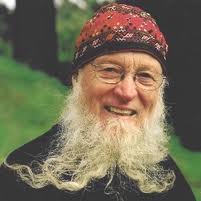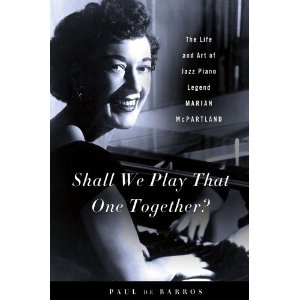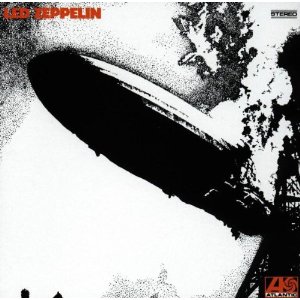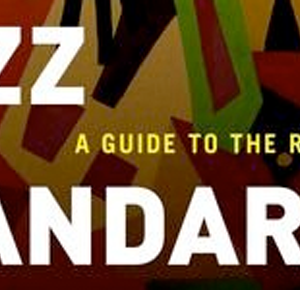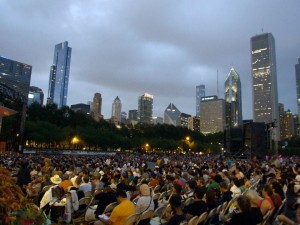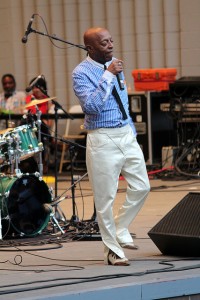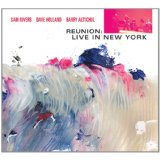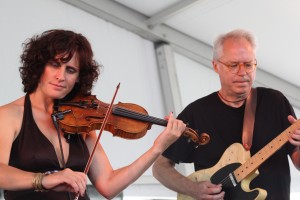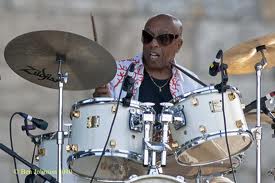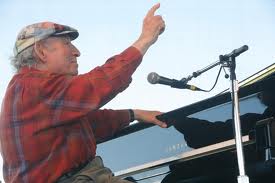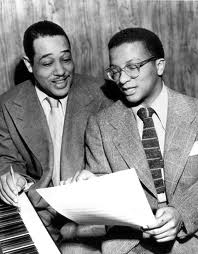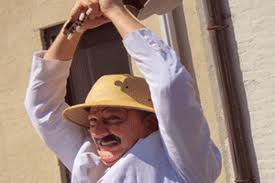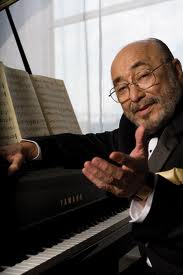I didn’t know Terry Riley could perform A Rainbow in Curved Air live, as he did last Friday with his guitarist son Gyan at the Skirbal Center for the Performing Arts on NYU’s campus, as part of an appearance by the Joshua Light Show. But yes he can, and masterfully — as if he just thought it […]
Archives for 2012
What does it take to write a jazz biography?
“Writing Jazz Biographies” is the third free, interactive webinar, scheduled for Wednesday, Sept. 19 at 8 pm. edt, presented by the Jazz Journalists Association. Paul de Barros (Shall We Play That One Together? The Life and Art of Piano Legend Marian McPartland), Robin D.G. Kelley (Thelonious Monk: The LIfe and Times of an American Original), […]
Kennedy Center honors over-the-top US and UK bluesmen
Chicago bluesman Buddy Guy, at age 75 as wild a guitar pyrotechnician as lives today, and the British dinosaur rockers Led Zeppelin, whose guitarist Jimmy Page stands in Guy’s shadow, are being celebrated with Kennedy Center Honors, to be presented at a program at the Kennedy Center on Dec. 2. Remind me again why we’re […]
Demise — er, downsizing — of an New York City arts review
Low ad revenue for CityArts-New York has brought an end to the twice-monthly column on jazz and related music I’ve written since its first issue in March 2009. Indeed, CityArts, originally trumpeted as “New York’s review of culture” Â and under film critic Armond White’s editorship heralded as “Bringing thinking back to the arts,” has been […]
Chicago Jazz Festival, and hometown survey
Being in Chicago during the week pre-Labor Day for the City’s Department of Cultural Affairs and Special Events (DCASE)-produced, Jazz Institute of Chi-programmed Jazz Festival has been my annual habit — a good one. My hometown continues to reward broad and deep musical listening: A far-South Side “send-off” for newly departed NEA Jazz Master saxophonist […]
Charlie Parker would be proud of 20th anniversary fest
The immortal Charlie Parker — the dazzling alto saxophonist who helped raise jazz to an abstract art form and embodied “hip” as a person experienced, perceptive, hedonistic, aware of the contradictions — would have dug the 20th anniversary Charlie Parker Jazz Festival held in Marcus Garvey Park, Harlem, Manhattan, New York City yesterday. His old buddy […]
First impressions on new jazz/blues/improv releases
Away for a week, upon my return I’m looking at 30 new releases, a surprising number for late August. Of course they’ve been pouring in all summer — this has been an extraordinary season for the issue of ambitious new projects by young artists and veterans both. Here are some immediate reactions to a handful. […]
Music, people and context at Newport Jazz Fest 2012
My new CityArts-New York column covers some of what went down at the 2012 Newport Jazz Festival. With three stages running staggered but near-simultaneous performances, there was much too much happening to hear it all (I’ve been listening to some of what I missed, like Bill Frisell’s modern string band tribute to John Lennon, at […]
Celebrate Charlie Parker with Roy Haynes and me
The NYC Charlie Parker Jazz Festival began 20 years ago and returns starting Aug. 17 with a week of activities leading up to free concerts Aug. 24 – 36 in Marcus Garvey Park, Harlem, and Tompkins Square Park, East Village. I will present headliner Roy Haynes with his “Drummer of the Year” Award from the Jazz Journalists […]
Jazz Festivals in Newport, and everywhere
The 58th anniversary of the Newport Jazz Festival starts tonight (Friday, 8/3) in Rhode Island, and thanks to producer George Wein, there’s a press bus going that I’ll be on. But you don’t have to go to Newport for the jazz fest experience — small towns as well as large ones throughout America (and beyond) […]
Are there new songs? Play what’s recorded on gigs?
The venerability, relevance and novelty of the “jazz standard” is being questioned in the jazzosphere, but I wonder about the dearth of new songs that are sticking in my latest column in CityArts-New York. In my just- previous column I reviewed recent albums by a few musicians gigging in NYC, and warned there’s no reason to expect […]
They had me at the rope trick: Vaudevillian Travesties of 2012 in NYC
AJ Silver is a cowboy from The Bronx, and his lasso act opening “Travesties of 2012,” a vaudeville cavalcade curated by Trav SD at the New York Music Theatre Festival brought out the grinning 3rd grader in me. Not a bad thing — it’s quite the pleasure to see a 14 foot hank of rope […]
Short list: 2013 NEA Jazz Masters announced (My guy won!)
Last January during the NEA Jazz Masters ceremonies at Lincoln Center, I blogged “Who should  the next NEA Jazz Masters be?” and wrote, “My own list of deserving nominees — it starts with Eddie Palmieri.” Today the NEA announced  its  Jazz Masters of 2013 — Eddie Palmieri! — pianist-composer-arranger-bandleader and spokesman known as the Sun of Latin Music. […]

